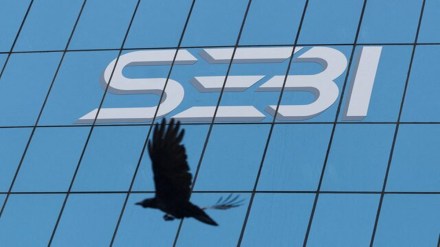By Nesil Staney
The Securities and Exchange Board of India (SEBI) on Wednesday launched a new initiative, ‘SEBI Check’, to help investors validate UPI addresses of registered intermediaries who collect funds from investors in real time.
Speaking at the launch, SEBI chairman Tuhin Kanta Pandey said, “We are introducing a systemic solution for investor safety.” Some apps, which look similar to broker apps, have defrauded investors. Going forward, the market regulator will ask Playstore to verify such apps, he said, explaining the reason to go the extra mile.
The new system will be implemented from October 1, and will apply to nearly 9,000 SEBI-registered intermediaries, mostly brokers, involved in fund collection.
Apart from blocking imposters, ‘SEBI Check’ will enhance transparency, awareness and security for retail investors by ensuring that payments are only made to verified entities. This comes against the backdrop of increasing cyber frauds from unverified players.
“We have developed this tool to complement the existing SEBI Saarthi app,” said a lead IT manager with the markets regulator. The tool is designed to send alerts and messages to investors, he said.
The ‘Check’ tool demands a mandatory UPI address format designated for all SEBI-registered, investor-facing intermediaries. These addresses will include a readable user name followed by a clear suffix that identifies the intermediary’s category such as “.brk” for brokers or “.mf” for mutual funds along with a unique “@valid” handle.
These handles will be allocated exclusively by the National Payments Corporation of India (NPCI) and can only be used for collecting payments from investors.
SEBI’s new tool will provide the option to scan a QR code or manually enter the UPI ID, enabling users to confirm details such as the associated bank account number and the Indian Financial System Code (IFSC) of the registered intermediary.
The regulator also introduced a visual verification mechanism to enhance transaction transparency. When a payment is initiated by an investor to a validated UPI handle, a distinctive “thumbs-up inside a green triangle” icon will appear, confirming the legitimacy of the recipient. The absence of the icon during a transaction will serve as a visual warning, cautioning investors against proceeding with the payment.
Intermediaries are also required to issue QR codes that prominently display this icon, making it easier for investors to verify payment details before proceeding.
Post the specified date, intermediaries will have to stop accepting payments using the current UPI Ids. While existing mode of funds transfer for the ongoing mutual fund SIPs will continue to be in force to avoid disruption, new SIPs and renewal or extension of SIPs must be done using new UPI IDs.
The transition to this new system will involve little to no cost, said SEBI officials. The regulator expects these reforms to prevent cyber frauds and imposters and boost confidence in digital financial transactions across the market ecosystem.
